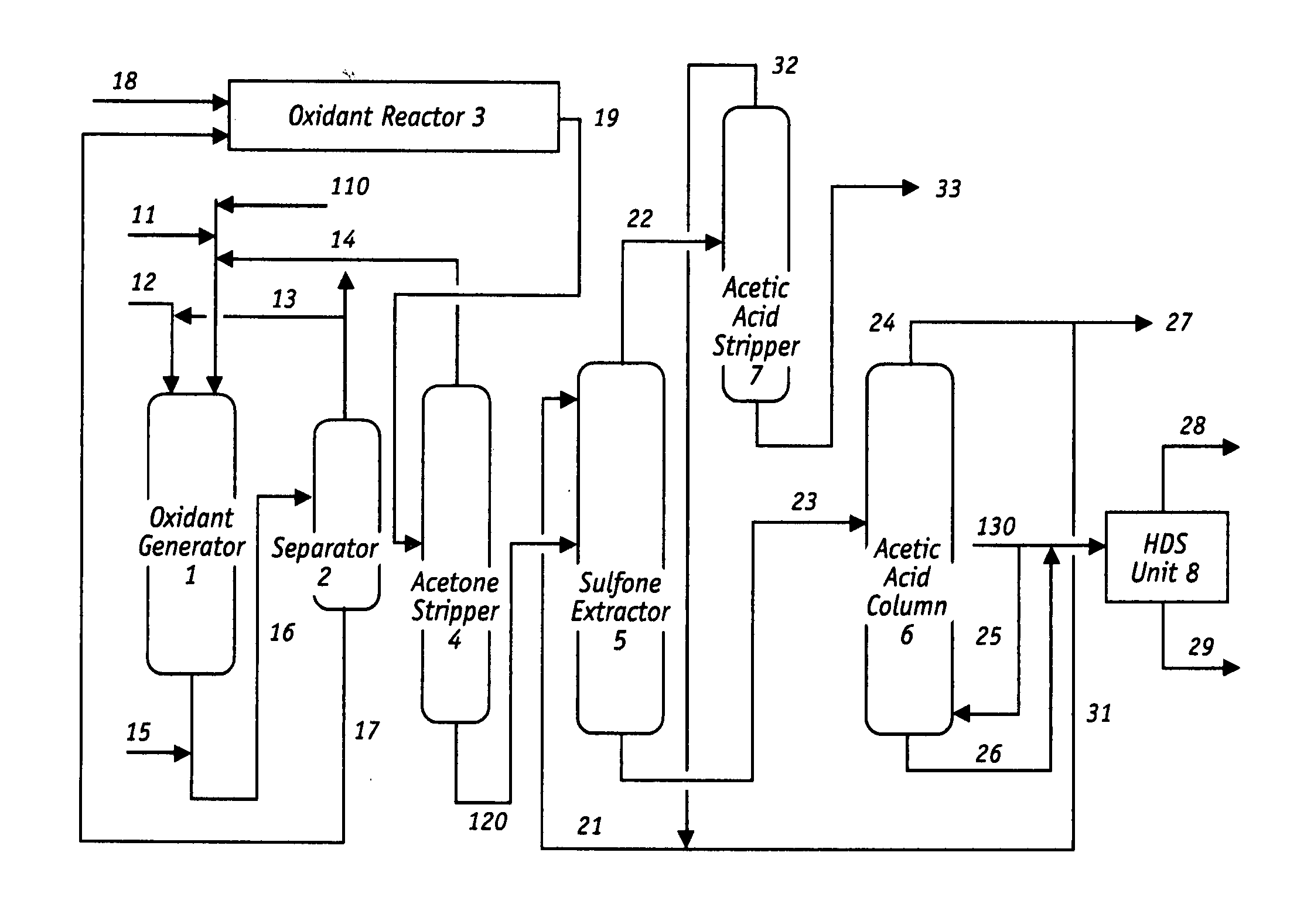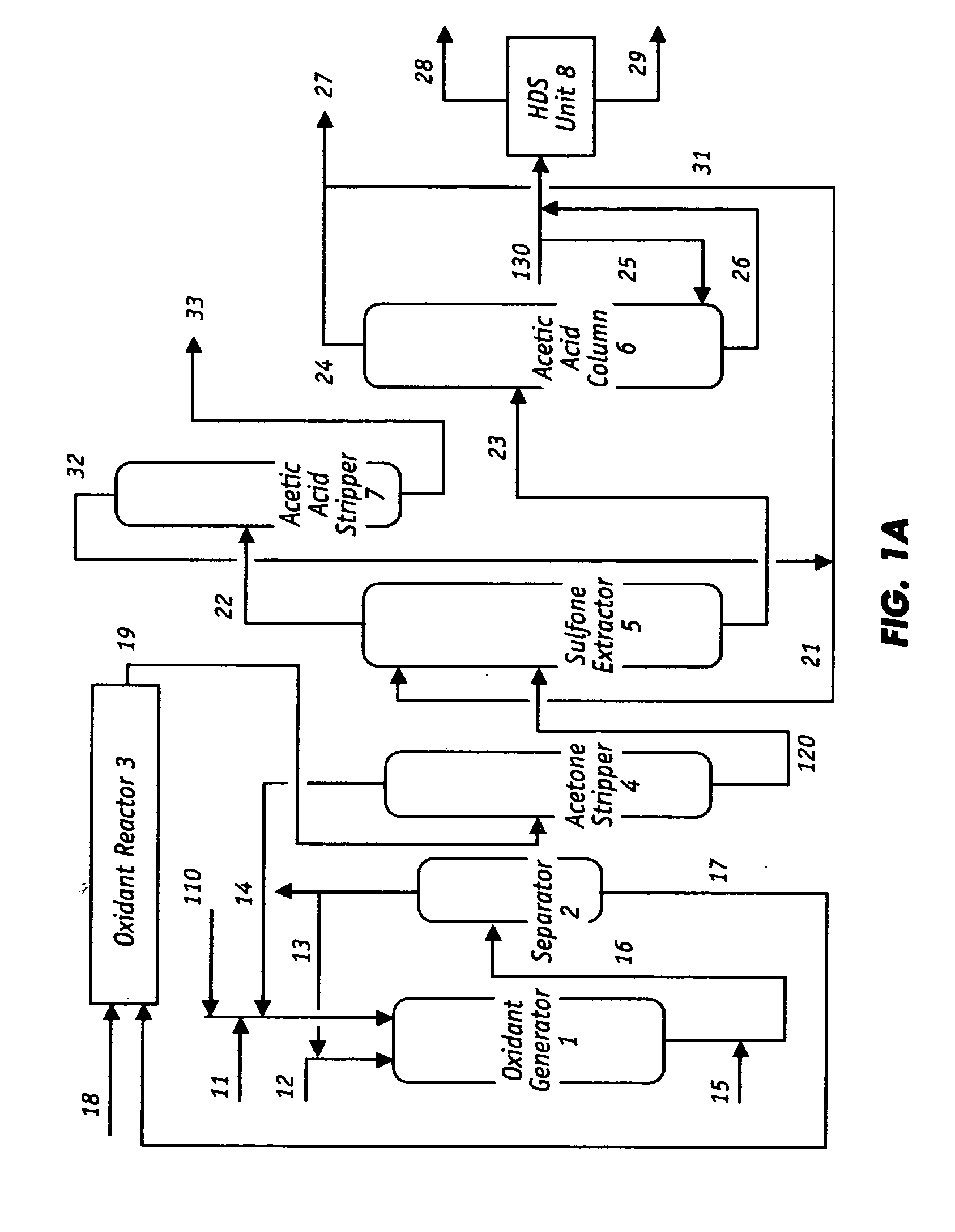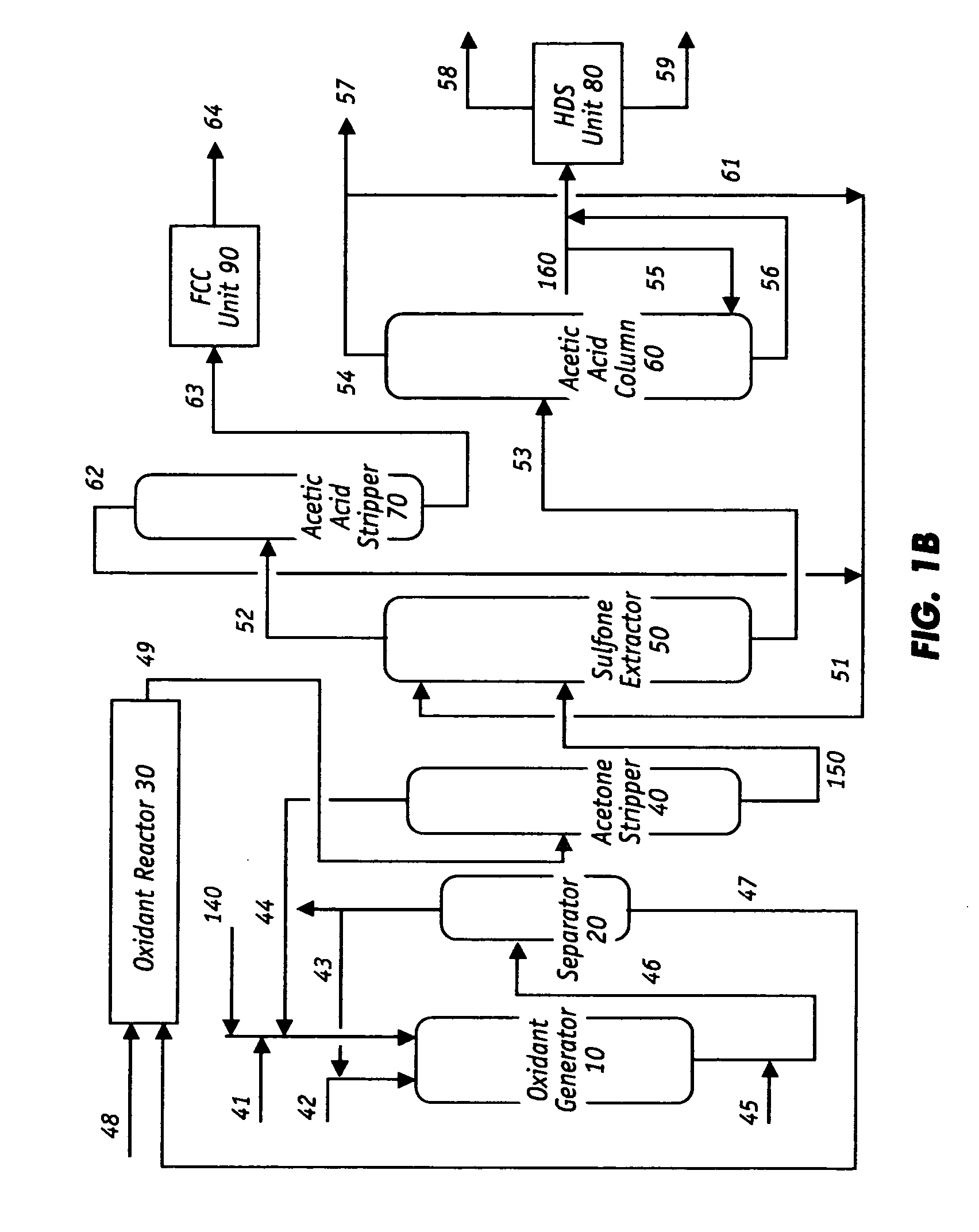Oxidative desulfurization and denitrogenation of petroleum oils
a petroleum oil and desulfurization technology, applied in the direction of hydrocarbon oil treatment, hydrocarbon oil refining, organic chemistry, etc., can solve the problems of increasing the operating temperature and pressure of hds, increasing the need for sulfur removal, and significantly slowing down the reaction rate, so as to reduce the temperature and reduce the residence time , the effect of fast oxidation of sulfur
- Summary
- Abstract
- Description
- Claims
- Application Information
AI Technical Summary
Benefits of technology
Problems solved by technology
Method used
Image
Examples
example 1
[0069] In this example non-aqueous oxidants suitable for the selective oxidation of sulfur and nitrogen compounds in petroleum oils were prepared. A liquid reactant containing 20 vol. % acetaldehyde (AcH), 80 vol. % acetone, and 7 ppm Fe(III) acetylacetone (FeAA) (catalyst) was fed co-currently with chemical grade oxygen gas to the top of a 0.94 cm diameter jacketed reactor column, which was packed with 20-40 mesh ceramic packing material that was 30 cm in length. Water having a constant temperature was circulated through the reactor jacket to control the reaction temperature. The flow rate of the liquid reactant into the reactor was at 1.5 ml per minute and the flow rate of oxygen gas was at 200 ml per minute. Three experimental runs were carried out at temperatures of 39, 45, and 60° C., under a constant reactor pressure of 6.1 atm. The results are summarized in Table 1.
TABLE 1AcHTemperatureProduct Composition (wt %)Conversion(° C.)PAAAAH2OCO2AcHAcetone(wt %)3918.61.8Trace0.065....
example 2
[0071] In this example, treated light gas oil (TLGO) was oxidized using different amounts of PAA that was prepared in accordance with Example 1. The TLGO had the following composition and properties:
[0072] 1. Elemental Composition: carbon 86.0 wt %; hydrogen 12.9 wt %; sulfur 301 ppm; and nitrogen 5.0 ppm.
[0073] 2. Asphaltene: 0 wt %.
[0074] 3. Density: 892 (kg / M3) @ 15° C.; 875 (kg / m3)@20° C.
[0075] 4. Viscosity: 6.5 (mPa-s) @ 20° C.
[0076] 5. Solid Concentration: 140 ppm.
[0077] The TLGO feed was mixed with sufficient amounts of PAA in a glass batch reactor that was equipped with a stirrer. The amounts of PAA (actual PAA) used ranged from 1.1 to 5.0 times the calculated stoichiometric amounts of PAA needed (stoich PAA). The oxidation reaction temperature was 50° C. and the reaction time was 15 minutes. No phase separation or solid precipitation was observed in any of the runs. Thereafter, each oxidized TLGO sample was subject to a one-stage extraction by AA to remove the sulfur ...
example 3
[0079] To further demonstrate the effectiveness of PAA in oxidizing sulfur that is present in oil, oxidation experiments were conducted on the same TLGO feed as in Example 2. The oxidation was conducted at 50° C. for 15 minutes, and the ratios of actual added PAA to the stoichiometric required PAA were varied from 1.8 to 5.0 to determine the optimal ratio for complete oxidation of the sulfur and nitrogen compounds in the TLGO. The results of gas chromatography (GC) analysis with an atomic emission detector for the original and treated TLGO are presented in FIGS. 3A-3E. The chromatograms clearly show a complete shift of the sulfur peaks forward the heavy end of the chromatogram when the ratios are higher than 1.8, which means that essentially all the sulfur and nitrogen compounds were converted into sulfones and nitrogen oxides under these conditions.
PUM
| Property | Measurement | Unit |
|---|---|---|
| wt % | aaaaa | aaaaa |
| pressure | aaaaa | aaaaa |
| temperature | aaaaa | aaaaa |
Abstract
Description
Claims
Application Information
 Login to View More
Login to View More - R&D
- Intellectual Property
- Life Sciences
- Materials
- Tech Scout
- Unparalleled Data Quality
- Higher Quality Content
- 60% Fewer Hallucinations
Browse by: Latest US Patents, China's latest patents, Technical Efficacy Thesaurus, Application Domain, Technology Topic, Popular Technical Reports.
© 2025 PatSnap. All rights reserved.Legal|Privacy policy|Modern Slavery Act Transparency Statement|Sitemap|About US| Contact US: help@patsnap.com



